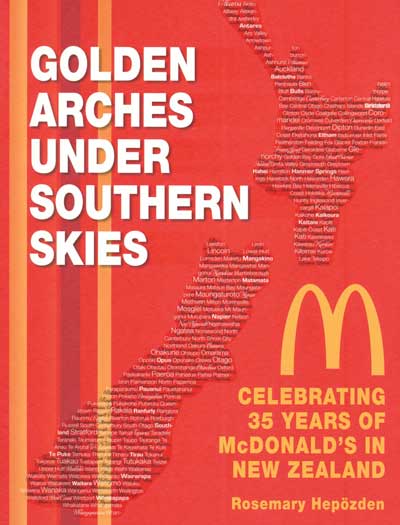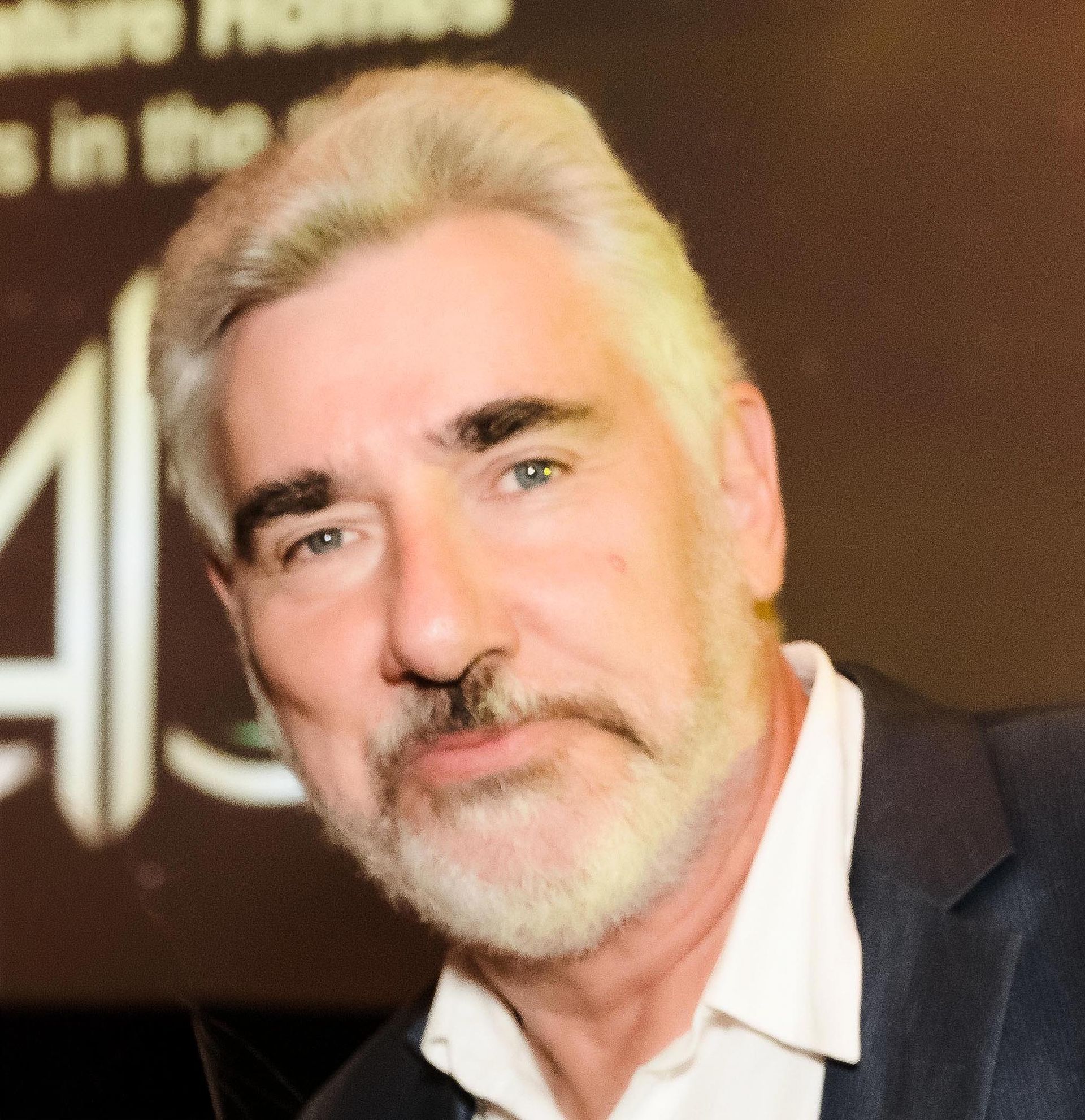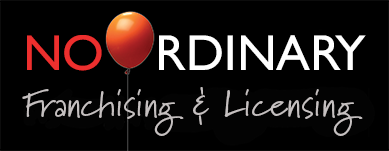It’s hard to imagine a New Zealand without supermarkets and McDonald’s, but until two Kiwi battlers came on the scene, that’s the way it was. They turned out to be pioneers of not only one but two revolutionary new business models.
Everybody in franchising has read the industry bible Behind the Golden Arches, but less well-known is the story of how McDonald’s came to New Zealand, as told in Golden Arches Under Southern Skies, by Rosemary Hepozen. The book was commissioned by McDonald’s in 2010 to celebrate their 35th anniversary in New Zealand so it is hardly contentious.

Pioneers of two revolutionary business models
Wally and Hugh were originally the owners of an IGA store – remember those? – in Tauranga, but in 1967 they saw the writing on the wall and became pioneers in New Zealand of a new business model that was beginning to take the world by storm – the modern supermarket. Over a little more than a decade they built an empire of more than 100 Shoprite supermarkets throughout the country.
In 1974 Wally and Hugh had another epiphany. If the future of food and grocery shopping was supermarket chains, the future of fast food was franchised chains such as another revolutionary American concept – McDonald’s. So off flew Wally and Hugh to the United States where they were given the cold shoulder by McDonald’s founder Ray Kroc, citing a visit to the country and saying “There aren’t any people... I never met a more dead-than-alive hole in my life.” But the brothers wouldn’t take no for an answer and the following year, McDonald’s finally gave in.
That was just the start of the Morris’s problems
In order to open their first store, they had to somehow balance the stringent rules and standards of McDonald’s against the draconian protectionism of the Muldoon government of the day. They knew they’d have problems in “she’ll be right” New Zealand with the insistence of McDonald’s massive franchise manual for hamburgers to be sprinkled with no less than 16, and no more than 18, tiny pieces of onion and toilets to be cleaned with a toothbrush. But the real sticking point was the requirement to bring in McDonald’s kitchen, furniture, soda fountain and uniforms when there was a strict import ban in place on these kinds of items. Even when Wally approached the government directly for dispensation from the ban, he was told he could keep the kitchen unit for only a year before having to re-export it from the country. Wiley old Wally solved the problem by cementing the unit to the floor so it could never be removed! Later, faced with the need to keep importing the expensive kitchen units for new stores, Wally engineered a complicated deal to finance them with surplus cheese purchased from the New Zealand Dairy Board in Germany and resold to McDonald’s in the United States, opening up a lucrative export opportunity for New Zealand produce which has grown to be worth more than $300 million today.
Chaos turns to success
The grand opening of the first McDonald’s store in Porirua can only be described as chaotic. It was the coldest day in years and despite snow on the surrounding hills, hundreds of people turned up clutching their two-for-one vouchers. There were so many that most had to wait their turn out in the cold to be let in, contenting themselves with listening to the brass band and watching Ronald McDonald almost suffer a nasty accident when his umbrella got caught up in a helicopter’s blades.
As the New Zealand operation grew it became apparent that McDonald’s was becoming more successful here than anyone at the company’s Chicago headquarters would have believed, and even the hastily revised estimate that the country might support 50 restaurants was later blown out of the water. (Today, McDonald’s has 159 restaurants in New Zealand.)
“Give me your keys and bugger off”
Despite efforts by local management to customise McDonald’s menu to suit local preferences, Kiwis seemed happy with the American menu. “There’s a tendency to New Zealandise McDonald’s, to say New Zealanders won’t like this or that,” said MD Gary Lloydd in 1985. “But in fact it’s much simpler to McDonaldise New Zealand.”
Lloydd, who had been the Morris brothers’ accountant in the early days, typified the McDonald’s approach to franchise management at the time, an approach which has been described by some as “the iron fist in the velvet glove”. He famously told a group of disgruntled franchisees: “If you don’t like it, you can give me your keys and bugger off.”
The end of two empires
Wally and Hugh Morris had built their Shoprite and McDonald’s empires on the back of two revolutionary new business models, but nothing in business as in life is certain except change. Perhaps the Morris brothers were too stretched across their two businesses, but they failed to keep up with the change in the supermarket industry when the larger, glitzier supermarkets of what would become the “Big Two”, Foodstuffs and Progressive Enterprises, started making the Shoprite supermarkets seem small and tired. Eventually they also lost control of the McDonald’s operation when the franchise’s head office took over.
Even though it was initiated by a long-time frachisee and commissioned by McDonald’s to celebrate 35 years in New Zealand, Golden Arches Under Southern Skies proved to be far more frank and interesting than we expected it to be, providing an object lesson in the power of innovative business models, the ingenuity of entrepreneurial Kiwis, the staying power of franchising, and the need to constantly keep ahead of the game.
Recommended reading.
My name is Robin La Pere of No Ordinary Consultants and having gained hands-on experience as a franchise manager and then CEO of my own franchise, I am now offering my knowledge and services as a franchise consultant to those wishing to franchise their business or take their existing franchise to a higher level.
Contact me
for a free Initial Consultation.
Relevant Articles
A major strength of franchising is that it’s based on tried and true business models. Trouble is, in this fast-changing business environment, what’s tried and true one year may be tired or irrelevant the next.
Not surprisingly, one out of three franchisors is concerned about the viability of their business model.
The 'Business Model Canvas' has emerged as a powerful tool for developing and updating business models. Recognising that franchise businesses differ in several ways from other business types, I have come up with a new version of the Business Model Canvas designed specifically for franchises.
Send me your email and I'll email you my e-book The Business Model Canvas for Franchisors:




